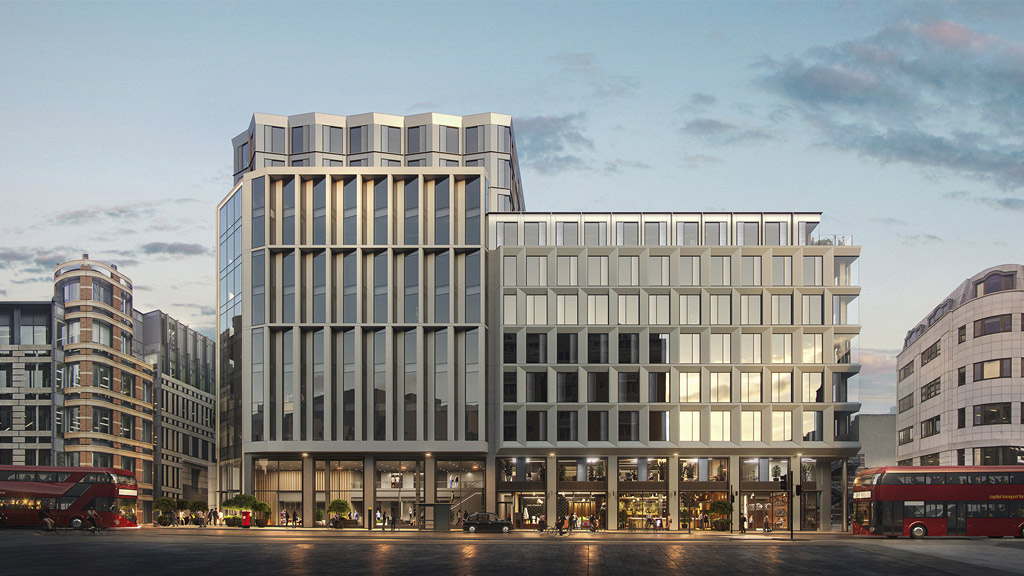Architects Must Design for a New Age
October 08, 2024 | By Duncan Swinhoe
Editor's Note: This article originally appeared on New London Agenda.
From iconic Roman landmarks such as the Pantheon to masterpieces like St. Paul's Cathedral here in London, architecture has been synonymous with an eternal sensibility. Architects have traditionally designed buildings to stand the test ohime, to leave their mark. Within the last decade, we have seen a shift globally and the reality is that the world in which many architectural works were built, is no longer the world in which we now live. Many of the buildings completed in the last two decades no longer perform at the level required for the future we are moving into. Architects urgently need to rethink their plans and strategies to meet the needs of our future cities - we must design for a new age.
Following the outbreak of COVID-19 as well as the ongoing climate emergency, we have seen the world evolve at breakneck speed. Although the buildings around us in our cities look the same, the world is different and how we are relating to our physical environment has changed. How we live, work, and interact continues to evolve and as a result, many of our buildings designed to facilitate this previous world have become outdated and are not fit for purpose. We are witnessing for the first time in the history of our centuries-long profession, that architects are now regularly outliving their buildings. Society has begun to look at these assets differently and this will only accelerate once Gen Z's start to shape the world around us. This is a great opportunity to design buildings that meet the new demands of society and that support the sustainable future we all need.
Good design is about what does good
This era of radical change is something we haven't experienced in recent living history since the postwar era or the industrial revolution before it. At Gensler, we are committed to developing innovative designs that cultivate human connection and drive positive change in our cities. Across our offices globally we are asking, how can we design with impact and anticipate and get ahead of the rapid pace of change? From generational changes and the democratization of work to Al and the climate emergency, the rules of engagement have transformed, and the role of architecture is no longer only about form, function and aesthetic. Good design is not solely about what looks good, it's also about what does good.
40% of the world's carbon comes from buildings - a key topic at last year's COP28. In the UK, Europe and across the world, we are actively collaborating with clients to develop resilient urban environments that support the health of our planet. Following the major repositioning work we did for the '90s Cargo building in Canary Wharf, we are now working to transform 10 Gresham Street in the City into one of the leading sustainable and low-carbon refurbishments in the London market - running on 100% clean electric energy. We're also working to reposition 100 New Bridge Street into a premium workplace built on a circular economy strategy in which a significant percentage of materials from the existing building are being reused. Across the pond, our colleagues in the U.S. are driving the office-to-residential movement through the creation of an algorithm that can assess a building's suitability for conversion into other uses. In Europe, we're exploring how this tool can help us identify opportunities to breathe new life into vacant buildings and empty districts.
Designing with impact means designing for cultural nuances
As we seek to revitalise our urban landscapes and advance our mission for carbon-neutral cities, there is a huge opportunity for architects to design better - not only in western hubs but also in up-and-coming cities across the world. With urbanisation increasing in the Global South, we have a responsibility to ensure that cities in the Global South are better designed to meet the needs of their climate, culture, and geography. Designing with impact means catering to cultural nuances and ensuring all cities are designed to promote connectivity and foster community. With the support of policymakers, architects will be able to design sustainable, inclusive, and accessible cities of the future that are home to vibrant communities and thriving businesses.
As highlighted in our 2024 Design Forecast, designing for a new age means developing a specialised strategy for our cities which incorporates the creation of experience-driven districts and places. When creating masterplans, we must move beyond concepts like the Central Business District as they are no longer sufficient to meet the new demands of 21st century living. Mixed-use, flexible approaches that integrate living, working, and leisure into every area and development including retail, entertainment, sports, and housing are the future. As the world continues to rapidly advance, architects are facing arguably the greatest challenge in the history of the profession. The idea of what good design is has evolved and we must keep up with the speed of change in order to design for this new age.
For media inquiries, email .

